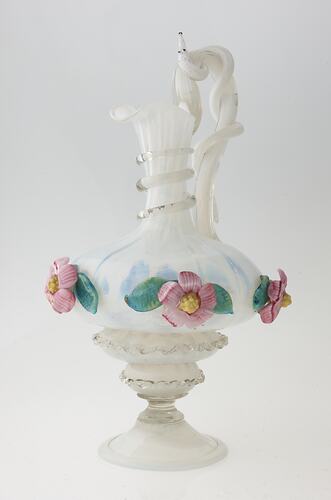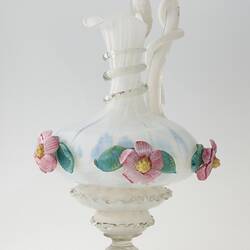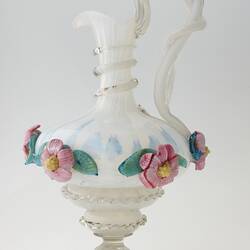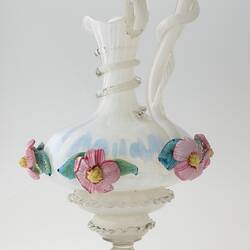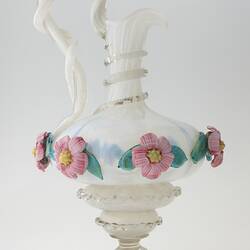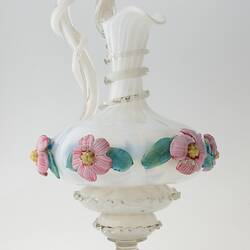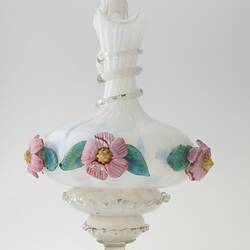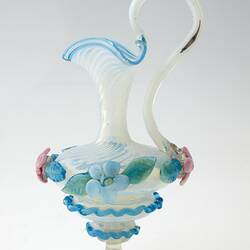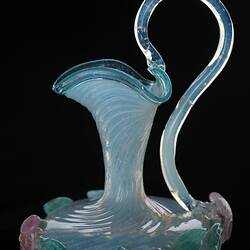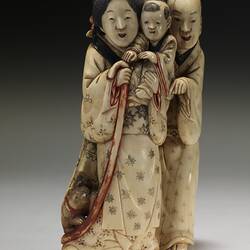Summary
Blown-glass ewer of opaque white glass with broad fluted neck, tiered, spreading foot with folded foot-rim, serpentine handle with entwined snake, and a body of flattened bulbous form with aplied floral and leaf decoration in pink and green glass, manufactured by Compagnia Venezia-Murano (CVM), Venice, Italy, circa 1880.
The CVM was established in 1877 by Sir Austen Henry Layard, a former business partner and financier of glass manufacturer Antonio Salviati with whom he had founded the Societa Anonima per azioni Salviati & Co. in 1866. After the former business collapsed, Layard retained several of Salviati's craftsmen, including members of the Seguso family of noted Venetian glassmakers. Many of the products subsequently produced by CVM show the clear influence of the Seguso style, and similar items are published in CVM's catalogues from this period.
The Compagnia Venezia-Murano were awarded the highest prize at the 1880 Melbourne International Exhibition, being the First Order of Merit (gold medal) for their exhibits.
This ewer is very similar in design and decorative treatment to the two smaller ewers in pale blue glass, also in the John Twycross International Exhibition Collection and attributed to Compagnia Venezia-Murano.
An almost identical ewer is depicted in watercolour and ink on a sheet of Compagnia Venezia Murano designs held by the Metropolitan Museum of Art in New York, accession number: 67.788.13.
Physical Description
Blown, opaque, glass ewer with fluted spout, cylindrical neck, flattened bulbous body and tiered, stemmed foot. Pink flowers with green leaves applied to waist of body. Serpent like creature curves around handle and neck.
More Information
-
Collection Names
-
Collecting Areas
-
Acquisition Information
Cultural Gifts Donation from Dr Will Twycross, 23 Jan 2009
-
Acknowledgement
Donated through the Australian Government's Cultural Gifts Program
-
Manufacturer
-
Place & Date Exhibited
Royal Exhibition Building (REB), Nicholson Street, Carlton, Greater Melbourne, Victoria, Australia, 1880-1881
-
Collector
Mr John Twycross, Elsternwick, Greater Melbourne, Victoria, Australia, 1881
-
Inscriptions
No markings.
-
Classification
Royal exhibition building, International exhibitions, Exhibition heritage
-
Category
-
Discipline
-
Type of item
-
Overall Dimensions
170 mm (Width), 280 mm (Height)
-
Keywords
Decorative Arts, Exhibitions: Melbourne International, 1880-1881, Glass, Italian Art, Royal Exhibition Building
